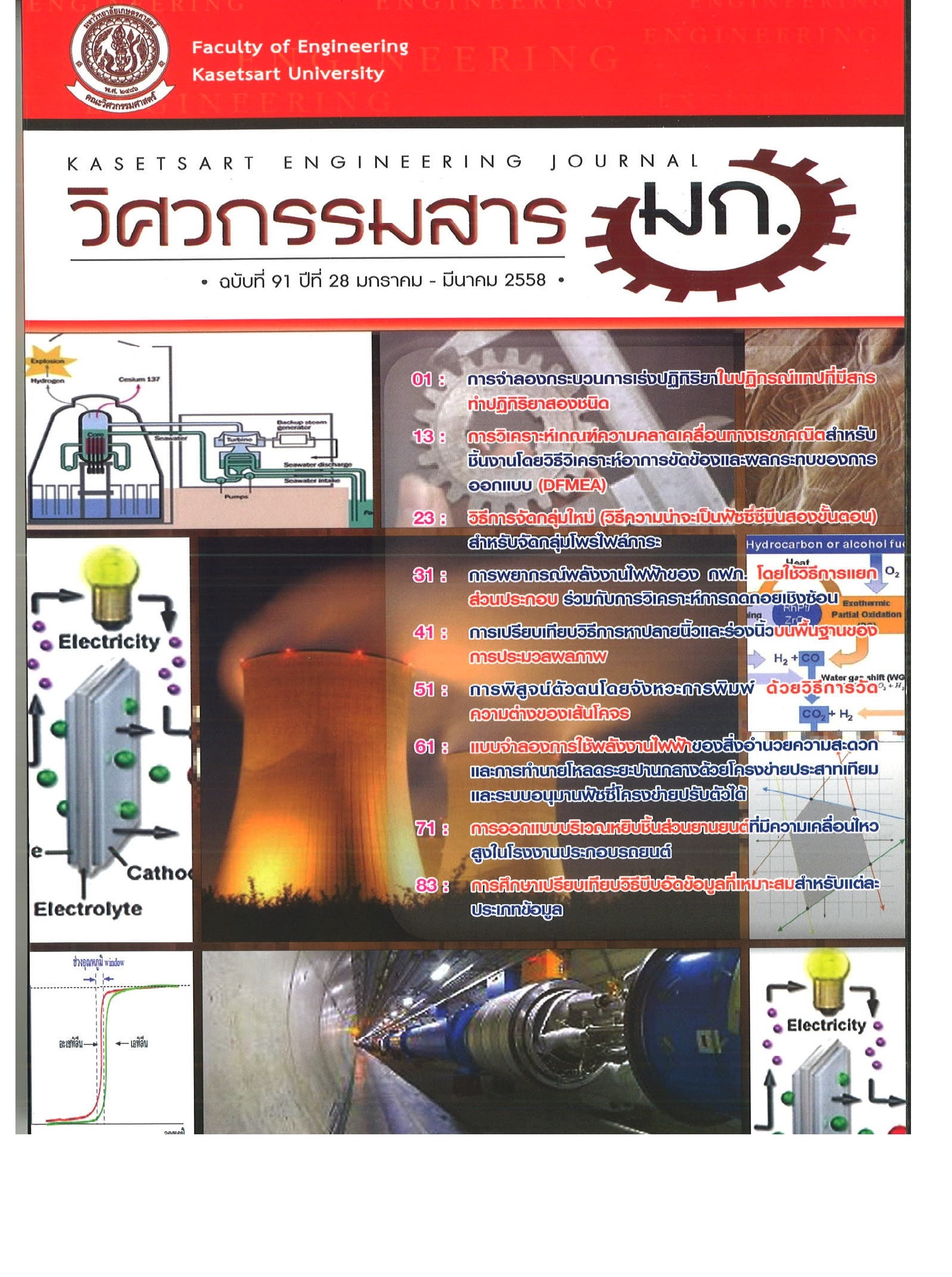การจำลองกระบวนการเร่งปฏิกิริยาในปฏิกรณ์ แทปที่มีสารทำปฏิกิริยาสองชนิด
Keywords:
การทดลองแทป, การทดลองปั๊มโพรบ, การเร่งปฏิกิริยาวิวิธพันธุ์, TAP experiment, Punp-probe experiment, heterogeneous catalytic reactionAbstract
การทดลองแทปที่มีผลตอบสนองแบบพัลซ์ถูกใช้สำหรับการศึกษาการเร่งปฏิกิริยาวิวิธพันธุ์ ผลตอบสนองที่ได้จากการทดลองสามารถให้ข้อมูลของกระบวนการเร่งปฏิกิริยาที่เกิดขึ้นในปฏิกรณ์แทป งานวิจัยนี้ได้จำลองแบบเชิงตัวเลขเพื่อหาลักษณะเฉพาะของการแปลงผันของก๊าซที่หาจากโค้งตอบสนองระหว่างการทดลองแทปแบบปั๊มโพรบซึ่งมีก๊าซทำปฏิกิริยาสองชนิดถูกฉีดสลับกันเข้าไปในปฏิกรณ์ ผลการจำลองแบบแสดงว่าสำหรับปฏิกิริยา Eley-Rideal การแปลงผันของก๊าซทำปฏิกิริยาที่ถูกดูดซับแบบไม่ผันกลับลดลงเมื่อเลขพัลซ์เพิ่มขึ้น ในขณะที่การแปลงผันของก๊าซที่เข้าทำปฏิกิริยาเพิ่มเมื่อเลขพัลซ์เพิ่มขึ้น และเมื่อเลขพัลซ์ สูงเพียงพอการแปลงผันของก๊าซทั้ง 2 ชนิดจะคงที่ สำหรับปฏิกิริยา Langmuir-Hinshelwood ที่การดูดซับเป็นแบบไม่ผันกลับ การแปลงผันของก๊าซทำปฏิกิริยาทั้ง 2 ชนิดจะลดลงเมื่อเลขพัลซ์เพิ่มขึ้น และเมื่อเลขพัลซ์สูงมากพอค่าการแปลงผันจะลดลงจนเป็นศูนย์ ผลลัพธ์ในงานวิจัยนี้แสดงให้เห็นว่าลักษณะเฉพาะของผลตอบสนองสามารถให้ข้อมูลของกลไกการเกิดปฏิกิริยาที่เป็นไปได้ในเบื้องต้นได
Simulation of Catalytic Processes in a TAP Reactor Involving Two Reactants
TAP pulse response experiments are used for heterogeneous catalytic reaction study. The responses obtained from the experiments can provide information of the catalytic processes occurred in the TAP reactor. In this research, numerical simulation was performed to determine characteristics of the gas conversions determined from the response curves during a pump-probe TAP experiment involving two reactant gases alternatively injected into the reactor. It was found that for the Eley-Rideal scheme, the gas conversion of the reactant gas adsorbed on the surface decreases with the pulse number while the gas conversion of another reacting gas increases with the pulse number. Each gas conversion becomes constant when the pulse number is sufficiently high. For the Langmuir-Hinshelwood when the adsorption of the gas is irreversible, both gas conversions decreases with the pulse number and become zero for a large-enough pulse number. These results show that the characteristics of the pulse response can primarily suggest possible reaction mechanisms.


